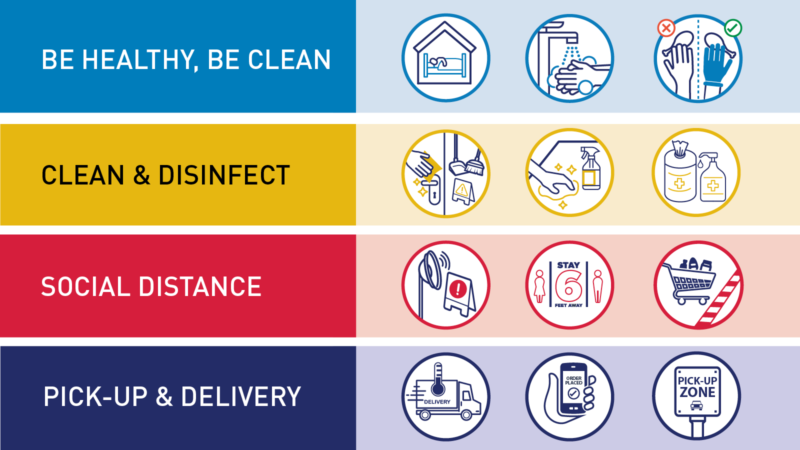The impact of the Coronavirus (COVID-19) on food has been undeniable, while people continue to stockpiling on supplies, foodservice options having been shut down, and eating occasions having shifted into the home. As a result, sales of food (especially through e-commerce) has been surging. However the outlook may be more difficult since consumers are reducing their spending on food as disposable income falls due the economic impact of COVID-19.
Global eating habits have changed dramatically in the wake of the widening Covid-19 pandemic. With bars and restaurants shutting down as entire countries go into lockdown, the world’s retailers have been scrambling to meet surging demand at the supermarket or via delivery apps. Basic staples and canned food products are back in fashion, while certain health foods are flying off the shelves almost as quickly as toilet rolls.
But Covid-19 is impacting much more than the end of the supply chain; farmworkers, logistics suppliers and more are struggling to keep up and it’s impacting the supply of fresh produce and staples.
Impact on Fresh Produce
During the first days of the crisis, there was a peak in demand and prices of fresh produce, now both are stabilizing as consumers are reduce their spending, and growers feel the hit from a reduction in demand from the foodservice and hospitality industries. Additionally, the international logistic issues and ongoing concern about labor shortages have started to hit the fresh produce industry that is on a strict planting, harvesting, and logistical schedule that cannot be adjusted at will.
According to the Produce Marketing Association, sales increased during the peak 30-40%, over the comparable week in 2019. The biggest winner being potatoes (114%), berries (23,5%), and onions (68%). (Check out the chart here on page 3). But the situation has changed and there’s been a decline in demand for berries and pineapples while at the same time an increase in demand for kiwi and apples. A recent virtual roundtable hosted by PMA could not explain the sudden shift in demand, although suggested it could be down to the perishability of the different products or consumer misconceptions about the safety of the different products. (I recently discovered there’s more vitamin C in a kiwi than an orange and my husband clearly did too as he bought kiwis for the first time ever last week; maybe this was widespread!)
It’s been a rocky ride for avocados, hit by a decline in demand from foodservice clients. In one week, prices fell 18% in the US but in an attempt to curb further drops in price, Mexico exported a whopping 70% fewer avocados the following week; harvesting avocados is not as urgent as other fresh produce categories. It’s a similar tale in Europe where the wholesale market for avocados is suffering and prices remain below 209, currently around 11% lower.
The United Fresh Produce Association estimated that the overall produce industry will take a $5 billion hit from the Covid-19 outbreak. Its president and CEO Tom Stenzel wrote that “restaurants and other foodservice outlets account for as much as 40% of fresh fruit and vegetable sales” and that it’s unfathomable to be shifting that amount to retail outlets.
Recommendations
As we manage to keep ourselves safe through these unprecedented times, many are wondering how to shop, order, and prepare food in a way they can prevent the transmission of the COVID-19. While there is no published evidence of contracting the coronavirus disease from touching food or food packaging that came in contact with the virus due to coughing or sneezing from an infected person, the virus can survive on surfaces and objects for a certain amount of time.
For this reason, we are strongly encouraged to wash our hands regularly, especially after touching frequently handled objects such as doorknobs or handles. Along with maintaining important social distancing practices, this page includes some tips for when you do need to go shopping, and how to handle your food when you bring it home.
Also, the FDA is sharing information about best practices to operate retail food stores, restaurants, and associated pick-up and delivery services during the COVID-19 pandemic to safeguard workers and consumers, Addressing key considerations for how foods offered at retail can be safely handled and delivered to the public, as well as key best practices for employee health, cleaning and sanitizing, and personal protective equipment (PPE).


